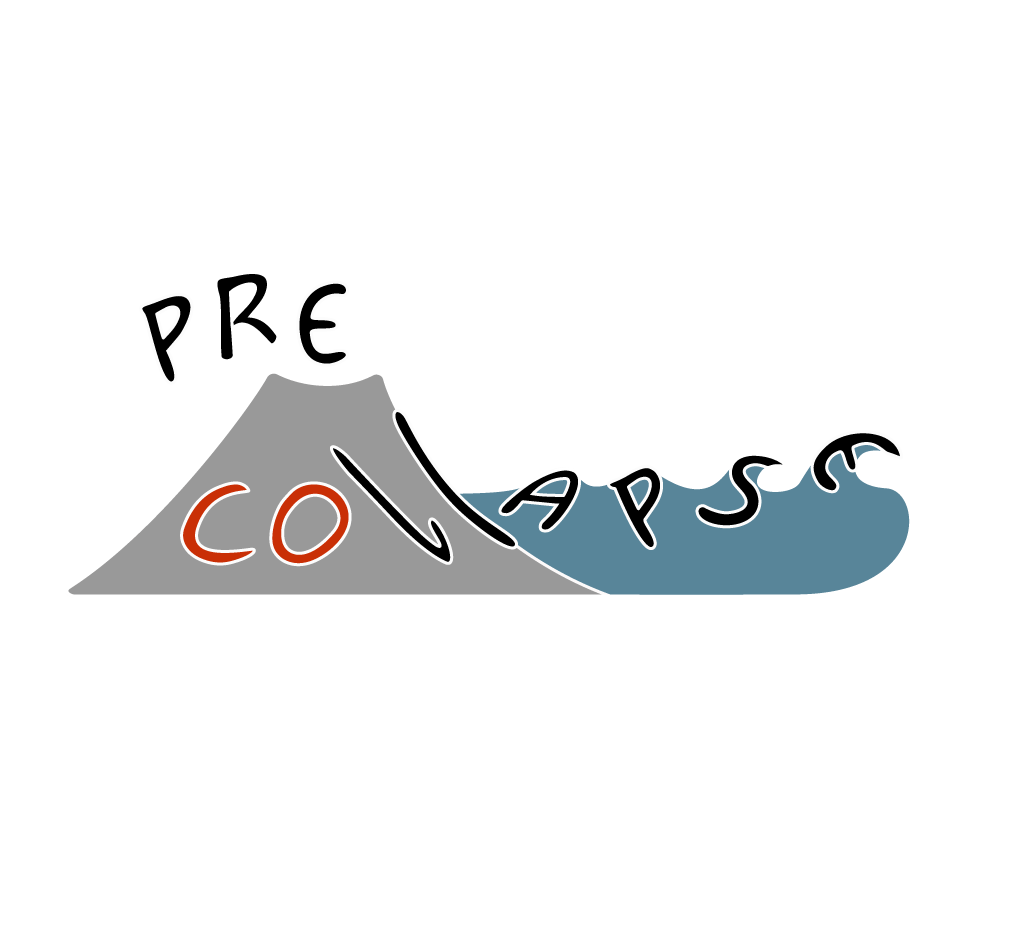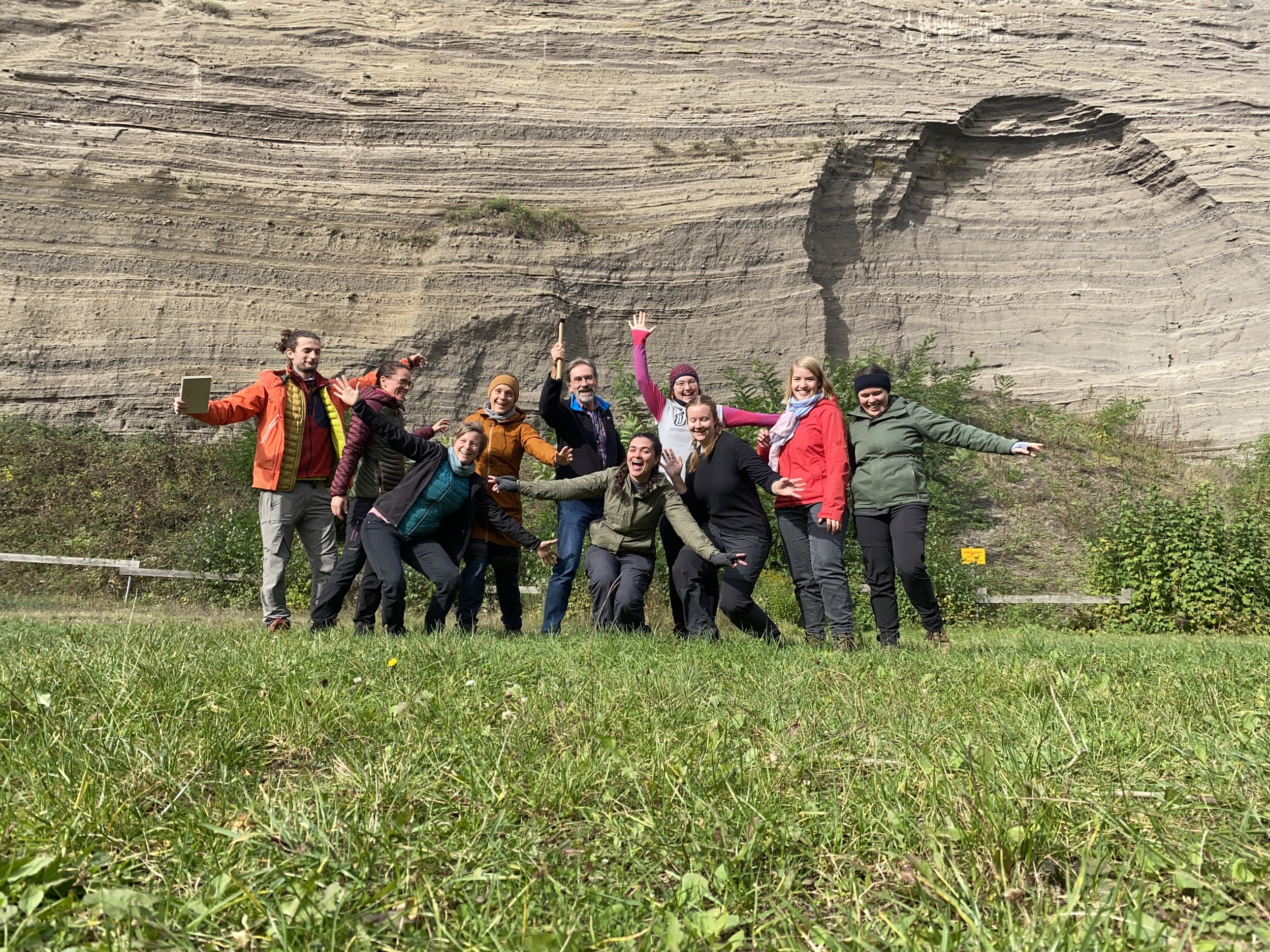Reflecting, Puzzling, and Exchanging:
PRE-COLLAPSE Writing Retreat, Workshop, and Field Trip in the Eifel Volcanic Region
The research team in front of the “Wingertsberg Wall”, Mendig, Germany.
It’s quiet. Between a meadow still glistening with recent rain and the autumn-hued trees, a light mist rises. The sun breaks through the clouds, casting a diffuse glow into the Wintergarden, where the minds of the participants light up with ideas.
From October 10th to 15th, the PRE-COLLAPSE research group gathered in the Eifel volcanic region, Germany for a writing retreat, workshop and field trip. Together, we shared meals, exchanged ideas, and had quiet moments as we delved into our research. Over three days, volcanologist Thor Hansteen from GEOMAR joined us, leading a field trip to the East Eifel volcanic landscape.
Putting Together the Research Puzzle
After three years of research on the PRE-COLLAPSE project, it was time to reflect on the progress and explore the connections among our individual research efforts. For the workshop, seven scientists came together to discuss their key findings, identify overarching themes, and explore which new research ideas have arisen. Using puzzle pieces, colored strings, and symbols to represent various categories and outcomes, we created a visual map of how our work interconnects.
For Principal Investigator (PI) Morelia Urlaub, this was a great opportunity to assess the status quo of her project—how initial research questions had evolved and how individual results contributed to the overall goals. Some research hypotheses were validated step by step, while others left questions open, allowing new inquiries to emerge as the project progresses.
The research puzzle became a dynamic tool, inspiring discussions on how different methods, case study volcanoes, and findings contribute to the overarching research questions.
Exploring the Volcanic Past of the Eifel
Our field trip led us through a landscape shaped by Paleogene to Holocene volcanic activity (about 50 Million years to less than 10 thousand years). We visited volcanic cones and explored deposits from past explosive eruptions, encountering bread-crust bombs, ignimbrites, and tephra deposits. The “Ettringer Höhlen” site was a particularly impressive lapilli deposit over ten meters thick, with overhanging cliffs and caves. We were also puzzled by folded deposits at “Dachsbusch”, a rare heritage of the deformation induced by solifluction processes that had occurred at the permafrost line during the last cold period.
One of the highlights was the “Wingertsberg Wall”, exposing massive deposits from the explosive Plinian-scale eruption of Laacher See, which occurred approximately 13 thousand years ago. After Thor Hansteen’s evening introduction to Eifel volcanism, the geologic background of the region, and the Laacher See eruption, we could imagine the huge energy behind this event covering the whole region with volcanic material. Intensive quarrying for construction materials exposed the - up-to- 60-meter-high Wingertsberg Wall, revealing layers of ignimbrite and tephra fallout. Joking about finding evidence for a volcanic flank collapse as the eruption trigger, we finally agreed that the eruption had started within a pre-existing crater, and later formed a huge hole in the ground, today known as the Laacher See, located two kilometers to the North.
Mushrooms, Moss, and Inspiration
The remnants of ancient volcanoes shaping the landscape, along with the complexity of the volcanic terrain in our own country, are stunning. The remote Eifel region, with its serene nature, gave us a sense of calm and inspiration. Mushrooms sprouted near our seminar house—some even found their way into our dinner! Informal discussions took place during walks around the area, and many took advantage of the serene surroundings for early morning runs, yoga sessions, and workouts. These moments of reflection and connection allowed us to recharge and refocus on our research, deepening both our understanding of the volcanic past and our collaborative bonds. The experience reminded us not only of the power of nature but also of the importance of taking time to reflect and reconnect, both with our work and with each other.
























